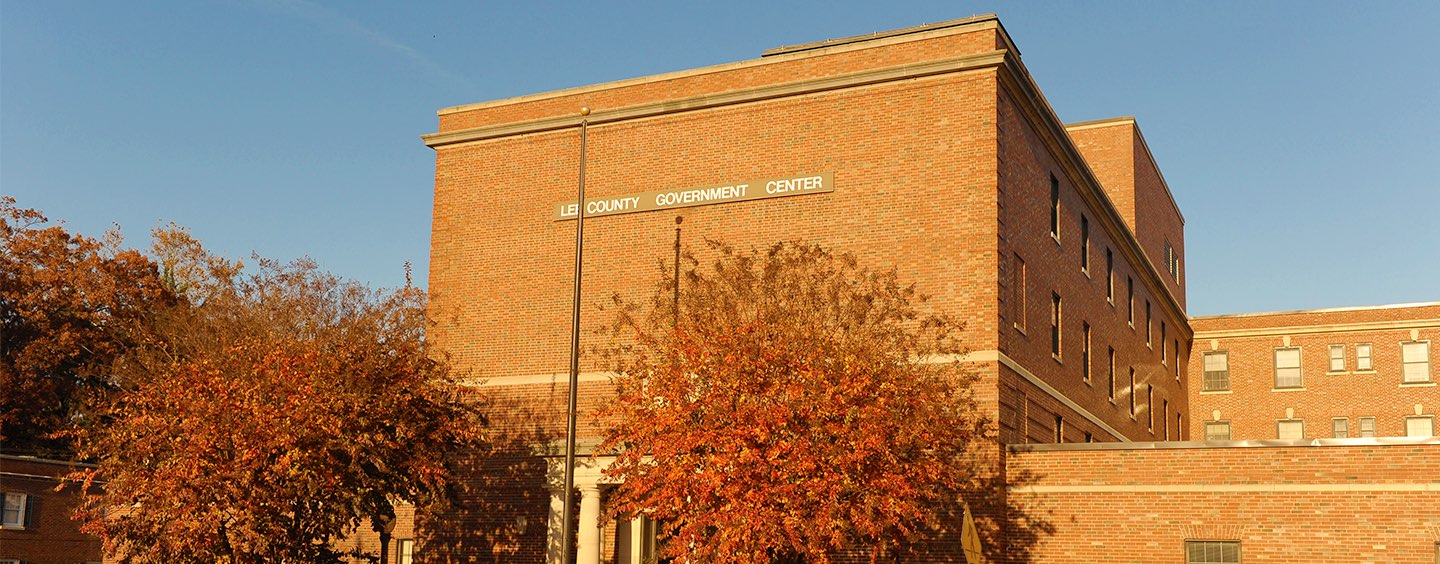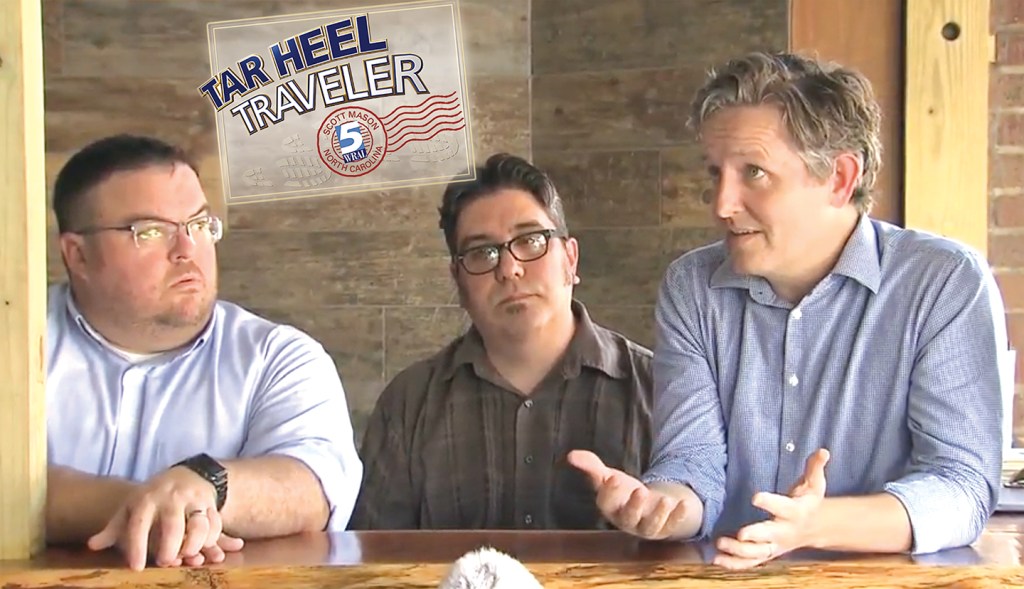It hasn’t been the smoothest of transitions since FirstHealth of the Carolinas took over EMS services in Lee County, with turnaround times getting worse since the hand-off in October. Many factors are to blame, but there is optimism.
By Richard Sullins | richard@rantnc.com
When an ambulance unit picks up a patient in Lee County and transports that patient to Central Carolina Hospital, there is a period of time between the arrival of the ambulance and the acceptance by CCH of the patient for their care known as the “turnaround time.”
It’s essential for a county of 63,000 that its four ambulances hand off their patients as quickly as possible to keep those units in-service for other emergencies as they occur.

Those hand offs don’t always happen so quickly, though. Congestion in the ER can result in longer turnover times, which in turn reduces the availability of ambulances and increases response times to other emergencies. With Lee County’s rapid expansion, its Board of Commissioners has been paying extra attention in recent months to the performance metrics contained within the franchise agreement it awarded to FirstHealth of the Carolinas last summer for emergency medical services within the county.
Those turnaround times have been going up steadily since last October, causing a rising level of concern within some quarters in the county as to what is behind the increasing wait times that, in some cases, can take up to two hours or even longer.
There’s no one answer for what’s causing the delays in handing off patients. But Lee County commissioners were told in April that since FirstHealth assumed responsibility for the county’s EMS last October, the average turnaround times they reported at CCH steadily increased, at least through March.
Many factors are to blame.
“Our hospital’s capacity, including in our emergency department and inpatient units, was affected during that period with the peak COVID surge happening in January, early February,” said Kara Umphlett, CCH’s coordinator of marketing and communications. “Combined with the increase in hospitalizations due to COVID-19 at that time, Central Carolina Hospital — like many hospitals and health care systems nationwide — continues to face staffing challenges, which directly affects our hospital’s bed capacity and other operational measures.”
In a quarterly report to the Board of Commissioners presented by County Manager Dr. John Crumpton, FirstHealth reported just after assuming responsibility for the contract the average turnaround time experienced by patients last October was 21 minutes and 50 seconds. In November, the average time increased to 22 minutes, but December saw another increase of more than 10 minutes to an average turnaround time of 33 minutes and 13 seconds.
By the time the new year started, it was taking an average of 34 minutes and 8 seconds to hand off patients from EMS units to the hospital, and that increased even further in February to 38 minutes and 31 seconds. In the five months since FirstHealth had assumed the contract, the average turnaround time had nearly doubled.
The number dropped, however, in March, when patients were being handed off from EMS units to the hospital in an average of 27 minutes flat. Still, EMS units were having to wait more than 20 minutes in the ER before they were cleared to leave and that prevented them from being able to respond to other 911 calls that may have come in while they were waiting.
FirstHealth declined to comment on the issue of increasing turnaround times, but CCH’s Umphlett told The Rant Monthly through its spokesperson, “our team is acutely aware of the vital role that EMS plays to our hospital and community, and our goal is not to tie up EMS at all. We would like for them to be able to bed the patient, give their report and complete a thorough hand off of the patient’s clinical care, so they are available for their next call. This helps us start our care process timely and get the EMS crew back on the road within the standards set by the North Carolina College of Emergency Physicians (30 minutes/90 percent of the time). If EMS receives a call while in our ED and need to respond immediately, our team works to pull available resources from another department to expedite the hand off.”
For Crumpton, the decrease of the turnaround times which began in March is evidence of CCH and FirstHealth working together in the face of adverse circumstances.
“We’re optimistic they’re working together to figure it out,” he said. “It’s in both of their best interest, because there’s a healthcare employee shortage that starts with (ER) doctors and nurses and goes all the way down to EMS. It’s not unique to Lee County. CCH was having similar issues with staffing before the change.”
Crumpton said the employee shortage isn’t just limited to EMS.
“I don’t think people really understand the shortage we’ve got with regard to all emergency response workers,” he said. “There was a time when 25 or 26 people were graduating from the (basic law enforcement training) program twice a year. Now it’s a luxury to have five or six graduates in a year. So we’re all in the same boat, and I think everybody should be trying to help each other because it’s not something that’s going to fix itself easily.”
The quarterly report also contained another important metric.
For those in need of help during an emergency, seconds can seem like minutes and minutes can seem like hours, so the amount of time necessary to get help can often be critical.
FirstHealth’s response time goal for the first year of the contract is to have a crew on the scene of each call received within an average of 8 minutes and 59 seconds from the time the call was placed. During the contract’s first quarter from October through December, response times averaged 8 minutes and 21 seconds. FirstHealth did not provide information for January and February, but March average response times were only slightly higher, at 8 minutes and 36 seconds, with 59 percent of all calls received being reached within their benchmark goal of less than nine minutes.

Call volume remains higher than anticipated
When FirstHealth submitted its proposal for EMS services for the county in May of last year, it predicted that it would respond to an estimated 6,190 calls during its first year of service. From Jan. 1 through March 31 of this year, FirstHealth ambulances were dispatched to respond to 2,378 calls, keeping Lee among the busiest counties within its network.
Combining those results with the 2,227 calls received from October to December and annualizing them projects a 12 month forecast of 9,210 calls through September 30 of this year. That’s 49 percent more than FirstHealth had anticipated serving.
Many of those calls were related to COVID but an even bigger factor was also at play. The emergency room remains a source of primary health care among the working poor, those on Medicaid and welfare programs, and increasingly among the elderly. For many of these people, and especially for those without reliable transportation, a visit to the emergency room by way of an ambulance is their access point to primary care.
Tim Simmons, FirstHealth EMS Director for Lee County, told Lee County commissioners in January that he believes 70 to 80 percent of those 4,600 calls were not emergencies that required an ambulance transport but could have instead been carried out by patients or families making use of privately-operated vehicles. Studies done nationwide over the past 25 years support the conclusion that inappropriate ambulance use ranges from 12 percent to 52 percent, and that’s much lower than what is being seen in Lee County.
Of the 2,378 calls received during the first three months of this year, 776 — almost a third — could be classified as “emergent” responses of critical care or trauma where situations can arise suddenly and unexpectedly, requiring quick judgment and prompt action.
During the public hearings in August, several people expressed concerns that the majority of calls in Lee County would result in high numbers of transports to facilities outside the county, but that has not been the case since the contract began. Only 122 calls made within the County during the first three months of this year resulted in transport outside of it, about 5 percent of the total.
Out-of-county transfers can be made for several reasons, including medical necessity or protocol, patient or family choice, physician-directed, local hospital on full diversion, an out-of-county facility was the closest facility, and the necessity for air transport.

Staffing and response times
The report to the commissioners did not contain information on staffing, but information provided by FirstHealth to The Rant Monthly shows that halfway through the first year of the contract, it has still not filled all of the 36 full-time positions it projected. As of April 27, only 25 full-time positions had been filled and FirstHealth is making use of 12 part-time employees to fill the gap. Those part-time staff members can work between 24 to 120 hours per month.
When FirstHealth assumed the contract on Oct. 1, it had only 10 full-time equivalent positions for a staff having openings for 36. By Jan. 12, the number of full-time hires had increased to 19 — slightly over half of the number that were available to be filled. Only five more applicants were said to be in the pipeline at that time.
This circumstance has become an ongoing concern. Republican Commissioner Bill Carver asked at the January meeting, “even if we had a fifth ambulance, could we staff it?”
Simmons expressed optimism despite the numbers, saying “I’m going out on a limb to say that we will have all our staffing issues taken care of within 90 days.”
Three months later, 11 of the 36 full-time positions were still unfilled, although FirstHealth said in a statement to The Rant Monthly that it “continue(s) to actively recruit for full-time staff.”
By the end of April, staffing shortages continued to plague the FirstHealth EMS Service. A report presented to the commissioners shows that full staffing (2 persons) was not available for at least one ambulance for 8 of the 30 days during the month due to staff shortages or COVID positive personnel.
The contract that began in October also requires FirstHealth to station a minimum of four ambulances and Advanced Life Support crews to decrease response times. Two crews were to be located at FirstHealth’s base on Central Drive in Sanford, with one other each sited at Northview Fire Station and Carolina Trace.
In their review with the commissioners in January, FirstHealth reported having only three trucks available and staffed 24 hours a day. As of Feb. 1, that number has now increased to four trucks available staffed by crews around the clock.
Earlier this year, Democratic County Commissioner Cameron Sharpe asked whether the four trucks in the contract were enough to meet the county’s needs. Simmons believed a fifth truck will be necessary in the downtown area when the Northview fire station opens “because most of our calls are coming from downtown.”
Having vehicles available when emergencies arise is critical in a county with 63,000 residents, and Sharpe asked Simmons about a situation last winter when all available trucks were in use and an emergency arose that resulted in a wait of 42 minutes before help arrived. Simmons said a confluence of circumstances had occurred with some trucks out on other calls and maintenance issues on another that made it inoperable. That incident resulted in a good outcome, but it serves as an illustration of the importance of having every vehicle operational and manned.
Who’s to blame?
The argument goes on in an April 26 letter sent to Santiago Giraldo, development services director for the county, by G. Barry Britt, chief and administrative director of the FirstHealth Regional EMS System.
Britt said two situations that were not the fault of FirstHealth EMS were “adversely affect(ing) our dispatch-to-on-scene performance metric.” In other words, these circumstances were making their numbers look bad.
First, Britt said, “The Sanford (Police Department) dispatches 911 calls to one of three Lee County districts, not to the closest available FirstHealth ambulance. If an ambulance stationed in that district is not available at the time of dispatch, FirstHealth personnel must identify and then reassign the call to the closest available ambulance.”
Britt said the time required to identify the next closest ambulance and reassign the incoming call to that unit hurt their performance numbers.
Britt also raised the issue of turnarounds in the CCH Emergency Department, saying that in the case of 177 dispatches received from January 1 through March 31, calls had to be rerouted to other ambulance units because other crews were either involved in patient hand offs in the emergency department or were holding or caring for a patient in an ambulance “due to ED overcrowding.”
Training program for fire departments begins
The Rant Monthly also obtained information from FirstHealth about their plan to offer tiered training at county fire departments, offering members the opportunity to receive training in emergency medical response from basic first aid through more advanced levels.
A pool of trained first responders can be an important part of the county’s emergency response network. Since fire departments are generally located more closely to scenes where emergency situations develop, they can typically arrive quicker and deliver the types of assistance that could be lifesaving in many instances.
In addition to basic first aid, the initial level of training will include trauma first responder training, stop the bleeding and use of tourniquets, and “pit crew CPR,” where responders initiate chest compressions as soon as they identify a patient in cardiac arrest. A second tier of training will center on airway insertion (for EMTs only) and a third level will include intramuscular epinephrine (also for EMTs only) and Narcan administration.
The first of two training programs has been conducted at the Northview, Deep River, Northwest Pocket, and Tramway fire departments, and planning is underway to schedule training soon at the Carolina Trace fire department.






















